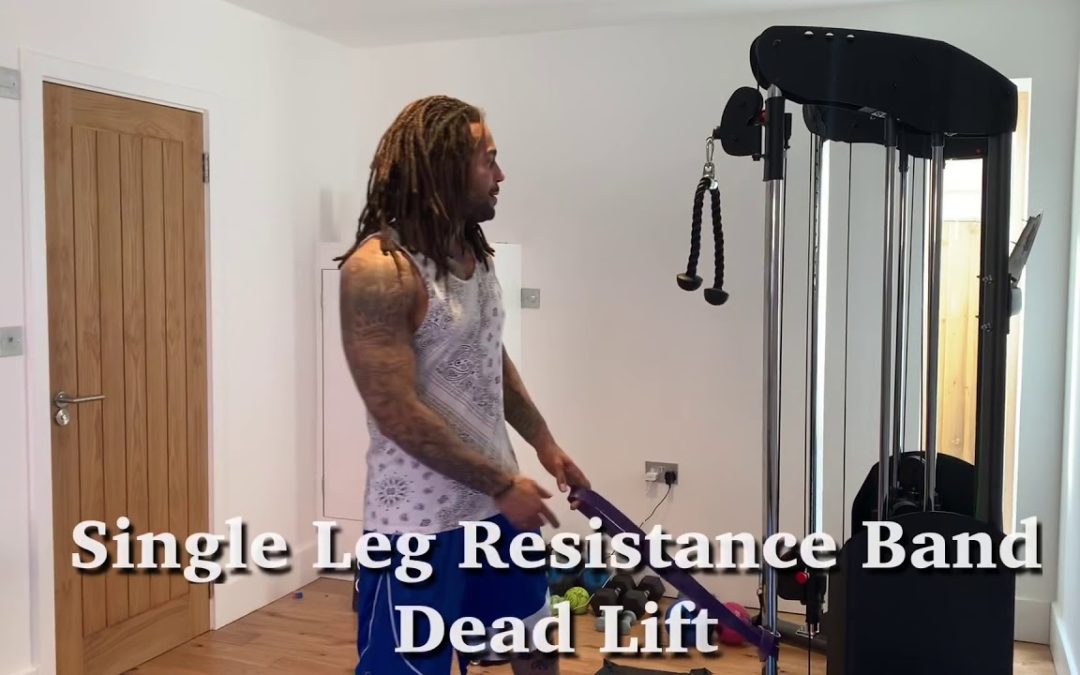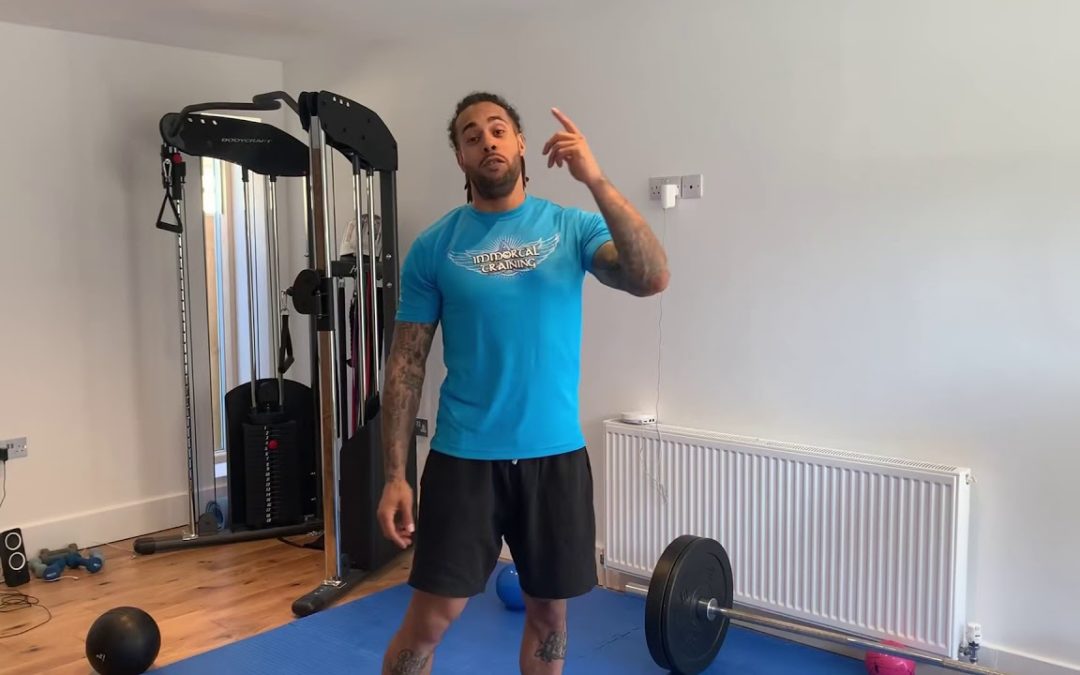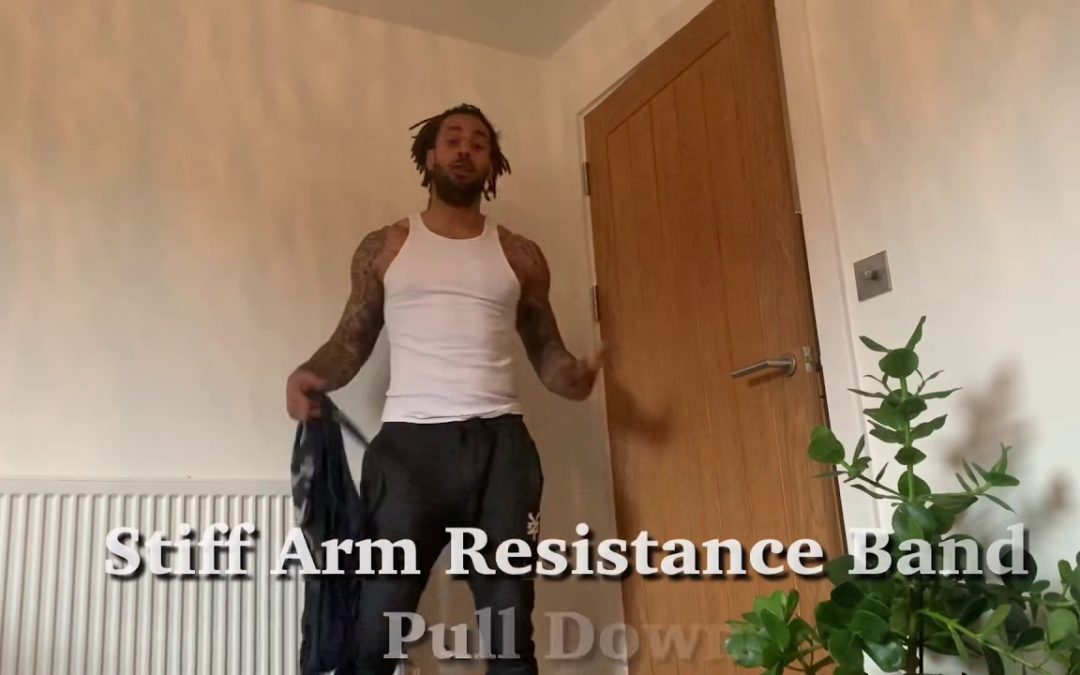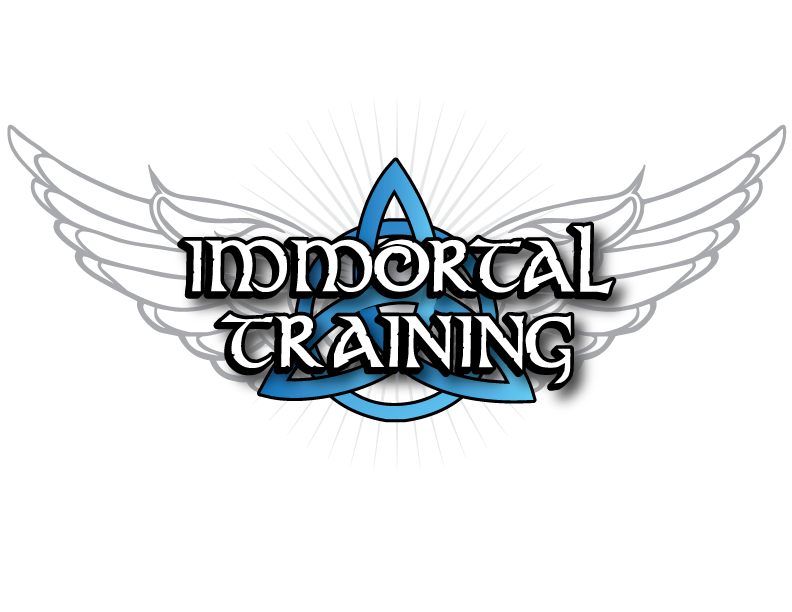


V Toe Touches

Stiff Arm Resistance Band Pull Down

Home Workout for Legs Using Plyometrics with Kettle Bells or Dumbbells
WHAT IS PLYOMETRICS?
Plyometrics involves the training of the muscles in a way as to exert maximum force with the objective of increasing power. In physics terms, power = strength x time/distance, but in order to simplify the meaning, power is the combination of speed and strength. Jumping is a form of plyometrics exercise and that’s what we are going to focus on in this workout.
I won’t bore you myself, but if you would like to learn more about the science of plyometrics/power training then check out this article: https://www.brianmac.co.uk/plymo.htm
For now, let’s just stick to the agenda, which is a hardcore home workout for legs using plyometrics with kettle bells, or dumbbells.
WHAT EQUIPMENT WILL I NEED?
- 1 or 2 kettle bells or dumbbells of a reasonable weight
SHOULD I WARM-UP FIRST?
Go here for my recommended warm-ups: https://youtu.be/JFdvISOXmY4
LET’S GET IT!
SUPER SET 1:
- Double Racked Squats – 8-12 reps
- Jump Squats – 8-12 reps
- 1-2 min rest
- 3-5 sets/rounds
SUPER SET 2:
- Double or Single Swings – 8-12 reps
- Jumping Sumo Squat 8-12 reps
- 1-2 min rest
- 3-5 sets/rounds
BURNOUT:
- Jump Squat Matrix – 4-5 reps
- 3-5 sets/rounds
- 1 min rest
GOOD LUCK!

Hip to Waist Measurement: Tutorial
Are you having trouble getting an accurate hip to waist measurement? Well, you’ve come to the right place! I’ll help you through the process, but first let’s get an understanding of why we use this measurement.
WHY IS THE HIP TO WAIST MEASUREMENT IMPORTANT?
Doctors often use waist measurements of a person to determine their possible health risks. Storing a lot of weight around the abdominal area can be a an indicator of high levels of visceral fat, which is the fat that gets stored in and around the organs. When too much fat builds up in the liver, it then gets pushed into the pancreas causing a person to become type 2 diabetic. Luckily, type 2 diabetes can be reversed with a solid keto based diet used in combination with intermittent fasting. For more information about ketosis and type 2 diabestes read this article: https://immortal-training.com/ketosis/
We can also use the hip to waist measurement to determine the body fat percentage of your entire body. All you need for this is your waist circumference, height and sex. If you are part of the Immortal Team then you can plug these numbers into your members area profile, in Body Metrics, to get your own body fat percentage results.
Without further adieu let’s get into it!
Scroll down to be coached through the hip to waist measurement process via video.
WHAT WILL I NEED TO MEASUREMENT HIPS TO WAIST?
- Measuring tape
- Tight fitting clothes
- An assistant (optional, but ideal)
HOW DO I MEASURE HIPS TO WAIST?
KEY POINTS FOR MEASURING THE WAIST:
- Measure approximately 1-2″ above the belly button at the smallest circumference of the waist
- Make sure the measuring tape is straight
KEY POINTS FOR MEASURING THE HIPS:
- Use the joints on the outsides of the hips as a guideline
- Wrap the tape around the buttocks and make sure that it is straight
- Be sure that you are not including the thighs in the measurement
Dependable body fat calculator (for non members): https://dqydj.com/body-fat-estimate-calculator/
References: https://www.diabetes.org.uk/preventing-type-2-diabetes/waist-measurement

Recent Comments